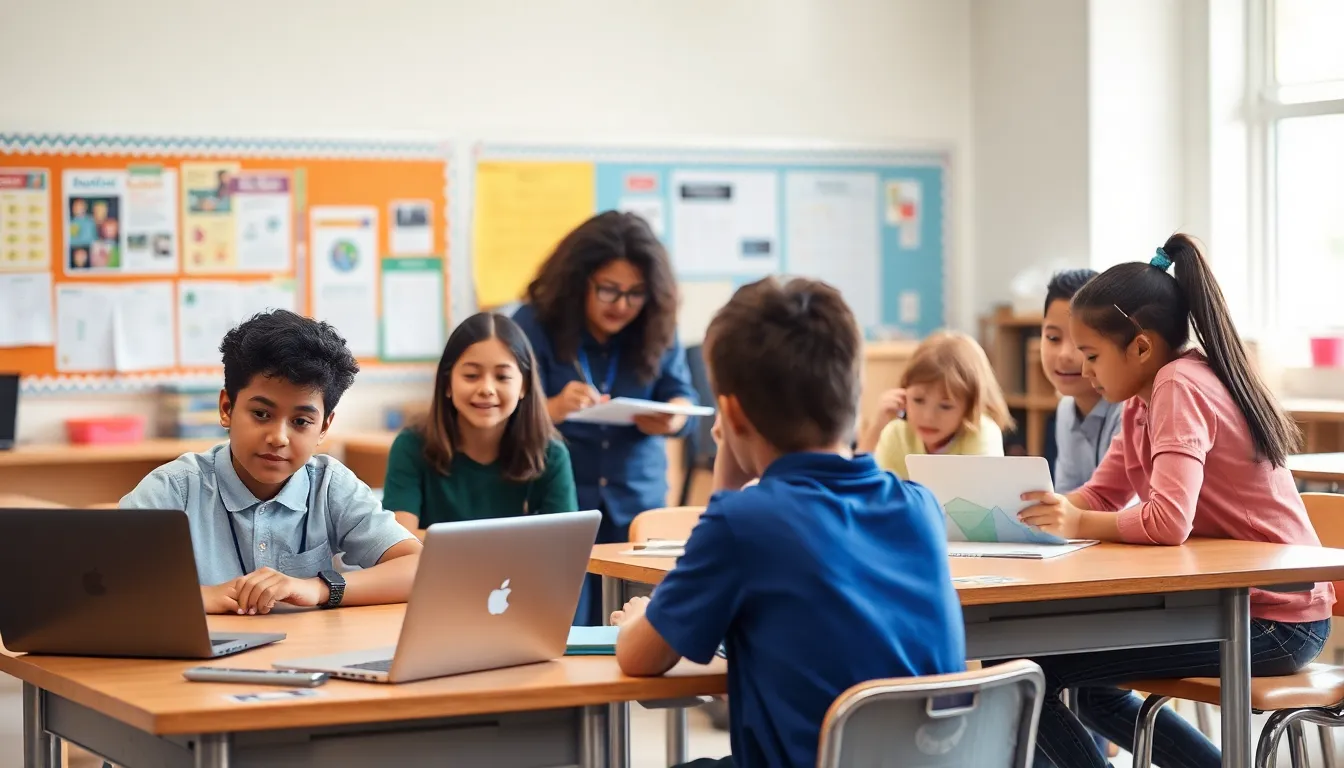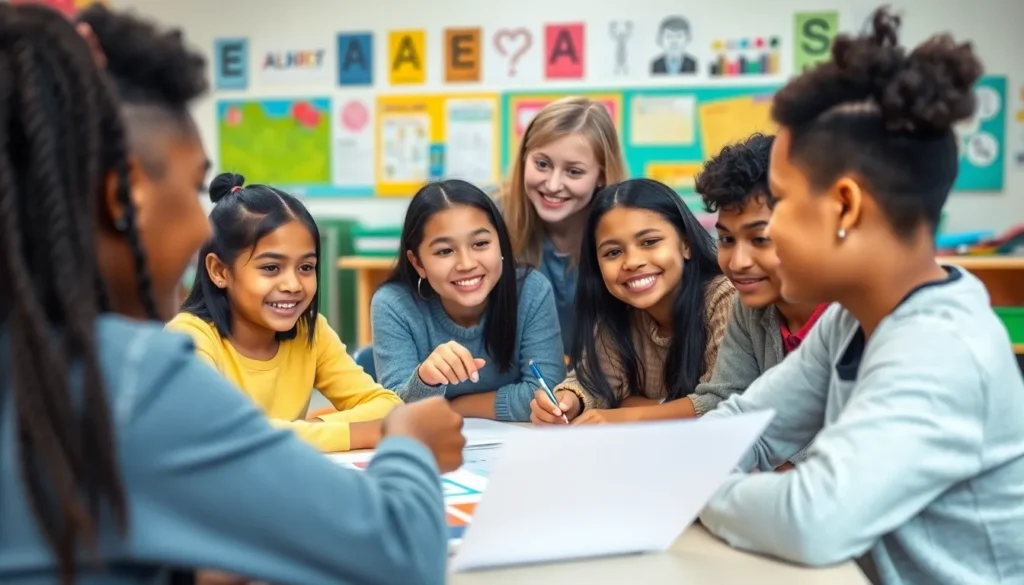Table of Contents
ToggleIn today’s diverse classrooms, one size doesn’t fit all. Educators face the challenge of meeting varied learning needs, making differentiating instruction essential. This approach tailors teaching methods to accommodate individual students’ strengths, interests, and readiness levels, fostering a more inclusive learning environment.
By embracing differentiation, teachers can engage every learner, ensuring that each student reaches their full potential. This strategy not only promotes academic growth but also builds confidence and motivation. Understanding the principles behind differentiating instruction can empower educators to create dynamic lesson plans that resonate with all students, regardless of their unique backgrounds and abilities.
Understanding Differentiating Instruction
Differentiating instruction involves tailoring teaching strategies to accommodate diverse student needs, ensuring inclusivity and engagement in learning. This method enhances academic growth by addressing individual strengths and learning readiness.
Definition and Importance
Differentiating instruction refers to the practice of modifying content, process, and assessment strategies based on students’ varied abilities, interests, and learning profiles. Its importance lies in creating an equitable learning environment where all students can thrive. Research by Tomlinson (2017) indicates that differentiated instruction improves student outcomes by promoting motivation and facilitating deeper understanding. Teachers who implement differentiation contribute to a more inclusive setting that recognizes each learner’s unique pathway to success.
Key Principles
Key principles of differentiating instruction include:
- Student-Centered Learning: Focuses on catering lessons to student interests, needs, and preferences.
- Flexible Grouping: Uses varied group arrangements for activities, allowing collaboration among diverse learners.
- Ongoing Assessment: Implements regular assessments to inform instruction and adjust strategies as required.
- Curriculum Compacting: Streamlines the curriculum for advanced learners, freeing up time for enrichment activities.
- Scaffolding: Provides support structures to help students grasp complex concepts before gradually reducing assistance.
By employing these principles, educators create a learning atmosphere that promotes achievement for all students, regardless of their starting points.
Approaches to Differentiating Instruction

Differentiating instruction involves several key approaches that educators can employ to meet the diverse needs of students. These approaches include content differentiation, process differentiation, and product differentiation. Each method plays a crucial role in creating a personalized learning experience.
Content Differentiation
Content differentiation focuses on adjusting the material presented to students. Teachers can modify reading materials, assign varied tasks, or use different resources according to students’ readiness levels and interests. For instance, students studying the same topic might read different texts that cater to their individual comprehension levels. By offering varied content, educators ensure that all students engage with the learning material, promoting a deeper understanding of key concepts.
Process Differentiation
Process differentiation encompasses varying the methods and strategies students use to engage with the learning material. Strategies may include small group discussions, independent research projects, or hands-on activities tailored to students’ learning preferences. For example, while some students may benefit from collaborative learning through group work, others may thrive in solitary tasks that allow for deep individual exploration. By providing multiple avenues for engagement, educators foster a supportive environment that meets the needs of every learner.
Product Differentiation
Product differentiation involves allowing students to demonstrate their understanding of content in various ways. Instructors can provide options for students to choose how they showcase their learning, such as through presentations, written reports, or creative projects. This approach enables learners to leverage their strengths and talents while addressing their learning preferences. For instance, visual learners may opt to create a video presentation, while others might prefer writing an essay. By offering diverse assessment methods, educators encourage student ownership of learning and ensure that all students can express their knowledge effectively.
Benefits of Differentiating Instruction
Differentiating instruction offers multiple benefits that positively impact student learning. By implementing varied teaching methods, educators can foster a more inclusive and effective classroom environment.
Enhancing Student Engagement
Enhancing student engagement occurs through the implementation of differentiated instruction strategies. Engaged students demonstrate increased motivation and interest in learning, which leads to improved academic performance. By providing choices in learning activities, educators tap into students’ interests, sparking curiosity and fostering a sense of ownership over their education. Customized projects, peer collaboration, and interactive learning experiences increase participation and retention. Research shows that when students feel connected to the material, they engage more deeply, resulting in a positive cycle of learning and achievement.
Addressing Diverse Learning Needs
Addressing diverse learning needs becomes achievable through differentiation. Every classroom comprises students with varying abilities, backgrounds, and learning styles. Differentiated instruction allows teachers to tailor their approach to accommodate these differences, ensuring that learning is accessible to all. Teachers can assess individual learning profiles, adjusting content complexity and instructional methods accordingly. Strategies like flexible grouping and individualized support facilitate targeted interventions, helping each student reach their potential. This approach promotes equity in education, providing every learner with necessary resources and opportunities for growth. Studies indicate that addressing diverse learning needs leads to significant gains in student outcomes, fostering confidence and resilience in learners.
Challenges in Implementing Differentiating Instruction
Implementing differentiating instruction presents several challenges educators face in diverse classrooms. Addressing these challenges is essential for maximizing the effectiveness of differentiated strategies.
Time Constraints
Time constraints pose significant challenges to effective differentiation. Teachers often manage multiple responsibilities, such as lesson planning, grading, and classroom management, which limits the time available to create personalized learning experiences. Planning varied lessons and tasks requires considerable preparation. For instance, developing multiple assessments or creating flexible groupings demands additional time investment. This creates potential barriers to successfully implementing differentiation in everyday teaching practice.
Curriculum Limitations
Curriculum limitations can hinder the implementation of differentiation. Rigidity in curricular frameworks often restricts educators’ ability to adapt content and processes to meet diverse student needs. Standardized curricula may not cater to varying readiness levels, interests, or learning styles. For example, predefined pacing guides can prevent teachers from adjusting lessons based on individual student progress. These constraints make it challenging for educators to provide equitable learning opportunities and fully engage all learners in the classroom.
Differentiating instruction is crucial for fostering an inclusive and effective learning environment. By tailoring teaching methods to meet each student’s unique needs, educators can significantly enhance engagement and motivation. This personalized approach not only supports diverse learning styles but also empowers students to take ownership of their education.
While challenges like time constraints and rigid curricula exist, the benefits of differentiation far outweigh these obstacles. As educators embrace flexible strategies and ongoing assessment, they create opportunities for all students to thrive. Ultimately, a commitment to differentiation paves the way for improved academic outcomes and a more equitable classroom experience.



